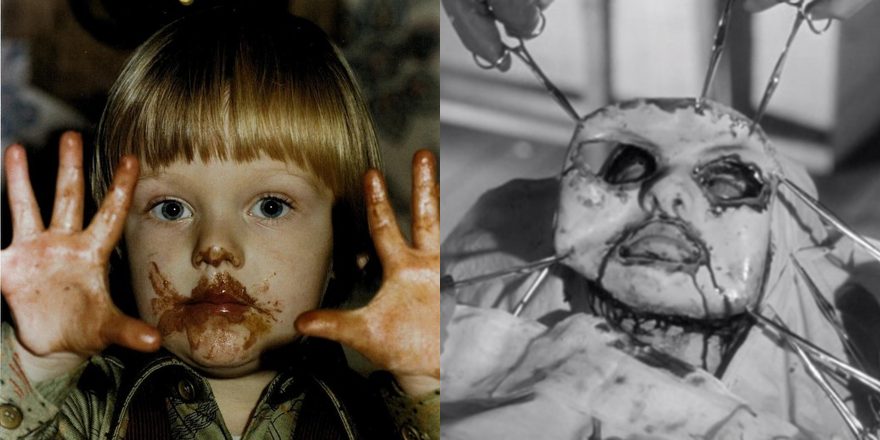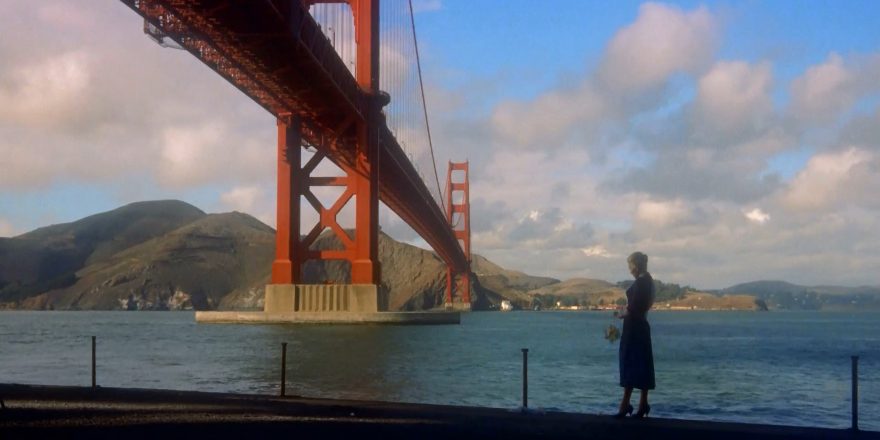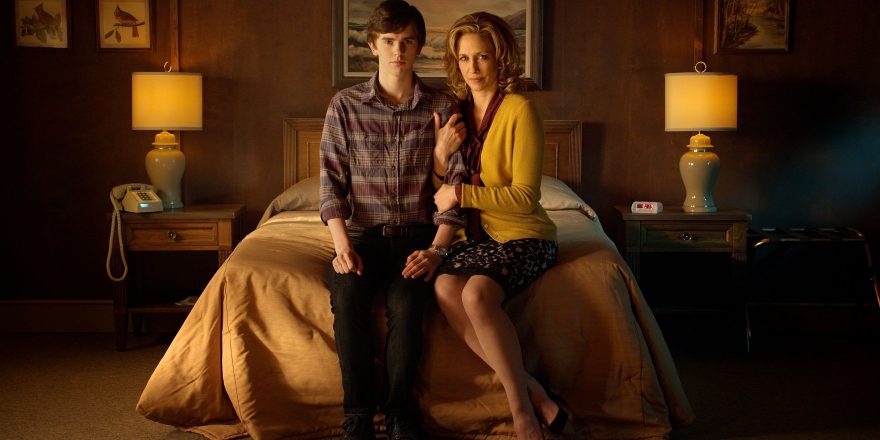I distinctly remember my parents’ green felt sofa. I remember the angled television set and its old-school cylindrical knobs. I remember where I stood that night, the precise orientation of my three-year-old body, and the distance that separated me from the screen. I do not remember why I was standing there, late at night, or what waking nightmare brought me there in the first place.
My mother was sitting on the couch, wrapped in a white blanket, eyes fixed on the screen. She turned her attention towards me, but mine remained locked on those black-and-white moving pictures. On those Eyes without a Face that would haunt my dreams for many years to come. My first movie memory. Quite possibly my earliest childhood memory. And I wonder, to this day, if Georges Franju’s harrowing images, which I was far too young to process and interpret in any sort of meaningful way, might have jolted my psyche into consciousness, right then and there, officially welcoming me into this life — through one of those rare memories capable of fixing us in the here and now, heightening our bond with the physical world.
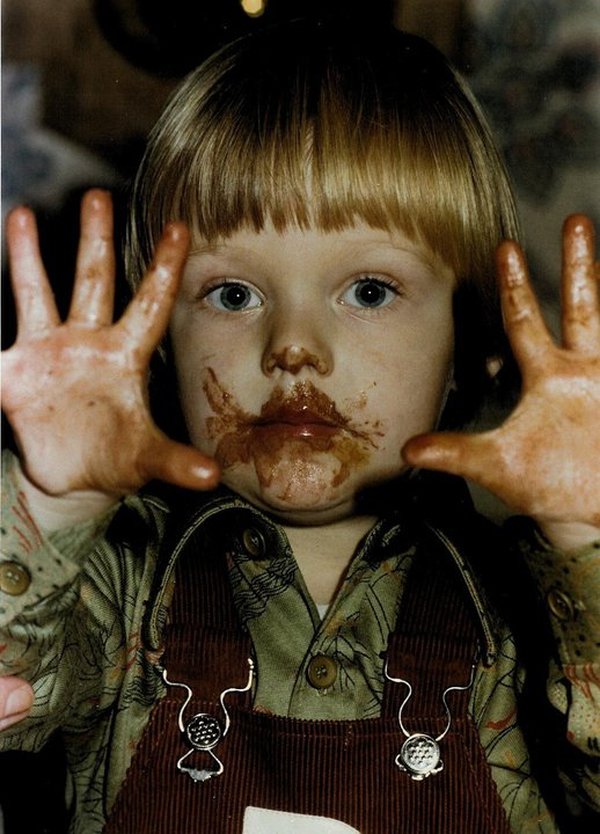
Those were images I was not supposed to see; I understand that now. I know this because of the way my mom reacted to my standing there. For almost 30 years, I remember wondering, Did that moment actually happen? Could it have been an early vivid dream, or a false memory similar to Rachael’s baby spiders in Blade Runner? As it turns out, I had inadvertently caught the forbidden images of a filmmaker I would be reintroduced to three decades later, by way of a Criterion DVD release. A cathartic moment, to be certain. My rite of passage into cinema. Naturally, I remember just as clearly where I was when I watched the film as an adult—this time, from beginning to end. That day, I was able to connect those images with a title, characters, a story… and in a way reclaim partial power over them.
As I tour the world with my film 78/52, there’s one question that invariably pops up during every Q&A: “What’s your first memory of Psycho?” And by this, what people really mean is: “What’s your first memory of the shower scene?” It’s a fair question to ask. Everybody remembers where they were when they first saw Mother’s shadowy silhouette creeping behind the translucent shower curtain, like the invisible worm in William Blake’s “The Sick Rose” — for it is Norman’s “dark, secret love” that destroys the life of Marion Crane. People remember this moment, I am told, like they remember where they were the day JFK was assassinated, or when the World Trade Center towers collapsed on 9/11.
Every time I hear this question, I think I should have an answer to this. I should have been shocked into remembering where I was, just as I remember jumping out of my seat, where I sat, and what the theater looked like, when Darth Vader proclaimed, “I am your father,” during the climax of the greatest of the Star Wars movies, The Empire Strikes Back. And yet, I have no distinct first memory of the shower scene. No first memory of Psycho. No first memory, in fact, of any Hitchcock film. Could this have to do with the fact that Hitchcock movies, like Columbo and Starsky & Hutch, were almost omnipresent in my childhood home? Hitch was always around. He was part of the family. Creepy Uncle Alfred. The lovable prankster I was allowed to watch. And maybe that’s it: Hitchcock movies weren’t forbidden territory. I never had to sneak out of my room in the middle of the night to watch Vertigo. His images somehow felt safe. I must have connected those films with the idea of make-believe, and understood them as secure cinematic space.
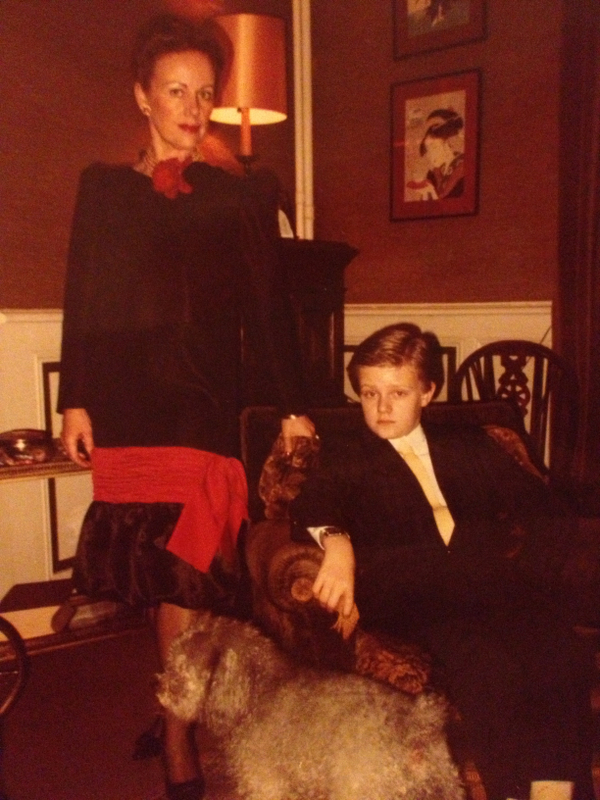
And yet, when I think about it, I find this rather strange, considering how Psycho messed with the zeitgeist of a generation of adults who were not only aware of Hitch’s propensity for subversive narrative tricks, but who also consciously expected them, and lined up for them with trepidation. Doubly surprising, in fact, when you consider the plethora of foreshadowing clues in the first 40 minutes of the film, and all the hints that Hitchcock dropped in his deadpan six-minute trailer.
Could it be, then, that it ultimately wasn’t the manufactured shock of Psycho, nor the surprise of the shower scene, but rather its elevated form of suspense that scared audiences out of their wits? Could it be that the shower scene’s full power lies more in its bold narrative subversion than in the visceral resonance of its extraordinary images? In other words, must we buy into the covenant between filmmaker and audience that the main character isn’t supposed to die halfway through the story to feel the full force of Hitchcock’s punk-rock middle finger to centuries of accepted story conventions? Clearly, this device (which was nothing short of revolutionary in 1960) continues to upset audiences to this day. One need look no further for proof of this than Game of Thrones or The Walking Dead, two franchises thriving on the untimely removal of key beloved characters at any given point in their respective narrative arc. Here, the subversion becomes the trope. “Who’s going to die this season? It better not be Daryl! I swear, there’s going to be hell to pay if Daryl goes!” Is it truly shocking if we’re expecting it? Of course not. It becomes suspense.
I would argue that only Psycho managed to deliver true shock and subliminal suspense at the same time. Shock, because the removal of a major movie star halfway through the story was truly a first. And suspense by way of subtle clues, foreshadowing and unnerving filmmaking techniques. Why are we made to watch every step of Marion’s showering ritual? Why would Hitchcock waste valuable screen time on such a mundane moment? Why the sudden, uncomfortable point-of-view switch? Why linger on the showerhead, on Marion unwrapping the bar of soap? Why the odd time cut, the crossing of the line, the jump cuts … and why, oh why, all that negative space? Those are signifiers, harbingers of things to come. In my mind, they represent Hitchcock’s most refined and subtle expression of suspense, in the sense that he doesn’t tell us precisely what’s coming, yet gives us the impression that something bad is about to happen. There’s no bomb under that table, but it sure does smell like gunpowder, doesn’t it? Can we call it “impressionistic suspense”?
To this day, I still do not fully understand why Hitchcock’s images didn’t traumatize me the way Eyes Without a Face or the head explosion in David Cronenberg’s Scanners did – because I know for a fact that I was just as young when I was exposed to them. What I do know with certainty, however, is that his images kept calling me back. During my early teenage years, I wanted to understand them. And I have come to realize that the power of Hitchcock’s cinema lies precisely in the relationship between his unforgettable frames and the narrative that allows them to resonate. In other words, the more I study and understand how Hitchcock operates on a structural story level, the more resonant and powerful those images become. The final shot of Vertigo haunts me, because Hitchcock somehow, miraculously, managed to subject James Stewart’s Scottie to the double loss of the same woman; to trick us into believing that the story might have been (alternately) a mystery, a ghost story, or a fever dream; and to remove Scottie’s story goal, even the major dramatic question, to boldly switch the genre and tone of his film. The shower scene haunts me equally, not because of the sheer power of its indelible images, which is undeniable; but because it is the logical punctuation of the first half of the film — every moment of which is meaningfully dedicated to the tragic lives of two sad, lonely, yearning, impulsive, and deeply flawed individuals, who somehow catch a fleeting glimpse of their own reflection in the dark mirror of their doppelgänger’s soul.
When people ask me about my first memory of Psycho, I think about Georges Franju. And when I think about Georges Franju, all I can think about is Hitchcock’s superior storytelling power, through what he called “pure cinema.” And then I understand why his mischievous cinematic tricks and glorious images keep calling me back to the source – “back to the primal moment,” as Richard Stanley says in 78/52 – moments before an epic deconstruction of the scene that was always there for me, and remains here to haunt our collective nightmares.


